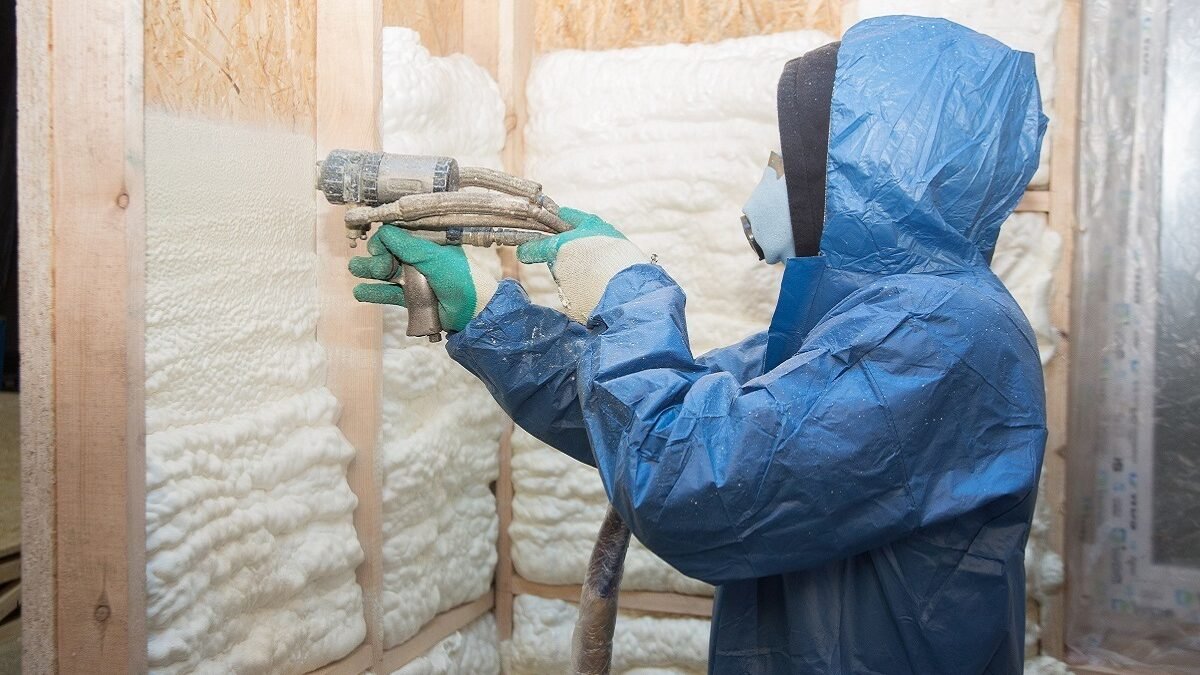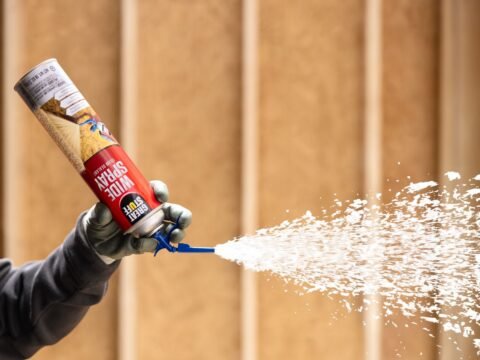- Call Us For A Quote
- (613) 319-8422
- info@613sprayfoam.ca
Why Should You Insulate Your Kitchen with Spray Foam?

The Essential Advantages of House Insulation
May 19, 2022
Garage Insulation Has a Surprise Effect on Home Comfort
May 26, 2022A lot of people associate cooking with insulation. It can be a surprise, considering its benefits to the homeowners. When people discuss remodeling kitchens, they typically mean making changes to cabinetry, such as wallpapers, changing the paint or wallpaper, updating the counters, adding an island, and the list.
What Is Spray Foam Insulation? How Does It Perform?
Polyurethane and isocyanate form the two components of a composite that makeup Spray foam insulation. Mix these two substances chemically, and they’ll react with each other expanding and hardening the compound.
In the end, spray foam insulation uses the spray gun to spray the two components, instantly creating insulation on a specific area. It can wrap around the object it’s applied to, snug and secure since it’s a foam.
Think about this: instead of wrapping the cardboard piece around an unfinished pipe, a spray-on substance sticks entirely to the line creating no gap. It’s crucial in the case of insulation and products used to insulate.
Why Is It Necessary to Insulate Your Kitchen?
Let’s examine what the top common areas in your home that need insulation are:
- The attic’s walls, roof, and the floor
- Knee-high walls
- Ceilings with unheated areas
- Crawlspaces that have vents underneath the floors
- Interstices between internal walls
These are the specific areas that form the thermal envelope of a house, the wall that separates indoor spaces from the outdoor. The thermal envelope must seal entirely without a trace of the draft for homes to stay cool in summer and warm during winter.
Insulation gets required in kitchens situated in the center of a house. But, based on the rest of the home structure,e there could be some exceptions (i.e., the Kitchen is close to the sleeping quarters or higher than the basement). But, if the Kitchen gets surrounded by at least one external wall, the insulation must be adequate.
Kitchens require insulation because it is an integral part of the thermal envelope and strengthens this portion of the house. It also fulfills the following requirements:
- Prevention of mold and bacteria
- Soundproofing
- Prevention of pests
- The thermal seal gets wholly sealed
- The support of the structure
Critical Locations to Focus on for Insulation Kitchen
The thermal envelope has to get filled, and air sealing must get done to ensure that you fully reap the advantages of spray foam insulation. It ensures that it doesn’t suffer from air leaks. Open-cell foam renowned for its expansion capacity may not always fit in the smallest spaces. Outside of ceilings and walls, other areas also require insulation.
Other kitchen areas that could require insulation and air sealing are:
- Behind the door and window moldings, There are crevices
- Floors with a crawlspace or basement underneath them
- Wiring slits get inserted into the wall cavities outside.
- Rim Joists in the basement
- Soffits are located adjacent to the Kitchen and are accessible.
- Vents for air conditioning and plumbing
613 Spray Foam Recommendations for Kitchen Insulation
Closed-cell polyurethane foam is an insulation substance that 613 Foam suggests for kitchens. It is the most frequently employed coating for spray foam in the Ottawa area.
It is a good R-value which is a measurement that determines its resistance to heat circulation and insulation. Closed-cell spray foam may increase comfort inside in all aspects, including acoustics to temperature, and even higher levels when placed in the most critical areas of a home.
As a reputable insulation company within The Ottawa Area, we’ve witnessed how the insulation cures and sets in ceilings, walls, and crawlspaces, and we’re sure of our recommendations. A house insulated with foam in a closed cell’s structural strength gets enhanced due to the additional rigidity.
Other attributes of closed-cell insulation make it an excellent option for insulating kitchens.
613 Spray Foam Get Included in Your Assistance
The Kitchen is no doubt the most lively room in your house. Anyone will certainly enjoy any improvement to this area. Begin by correctly and thoroughly insulating your Kitchen.
613 Spray Foam offers insulation solutions in The Ottawa Area for every part of your residential or commercial construction.
Then, you’ll have a meeting with our estimator, who will give you details about your project. Then, you’ll receive a personalized proposal, which includes a brief description of your project and additional options and an exact price. Don’t hesitate to contact us at info@613sprayfoam.ca or (613) 319-8422.




